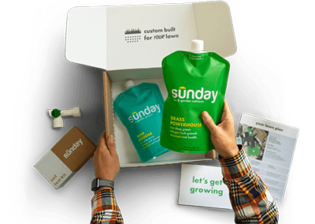When it comes to choosing the best grass seed for your lawn in North Dakota, there are a variety of factors to consider. The state’s unique climate and soil conditions can present challenges for growing a lush and healthy lawn. However, with careful consideration and selection of the right type of grass seed, it is possible to achieve a beautiful and resilient lawn that can withstand the harsh conditions of North Dakota’s climate.
In this article, we will explore the best options for grass seed in North Dakota, including Kentucky Bluegrass, Fine Fescue, Perennial Ryegrass, and Buffalograss. Each of these grass varieties has unique characteristics that make them well-suited for particular growing conditions.
We will also discuss North Dakota’s climate and the challenges that homeowners may face when trying to grow a lawn in this region. By the end of this article, readers will have a comprehensive understanding of the best grass seed options and the factors to consider when selecting grass seed for their North Dakota lawn.
Kentucky Bluegrass
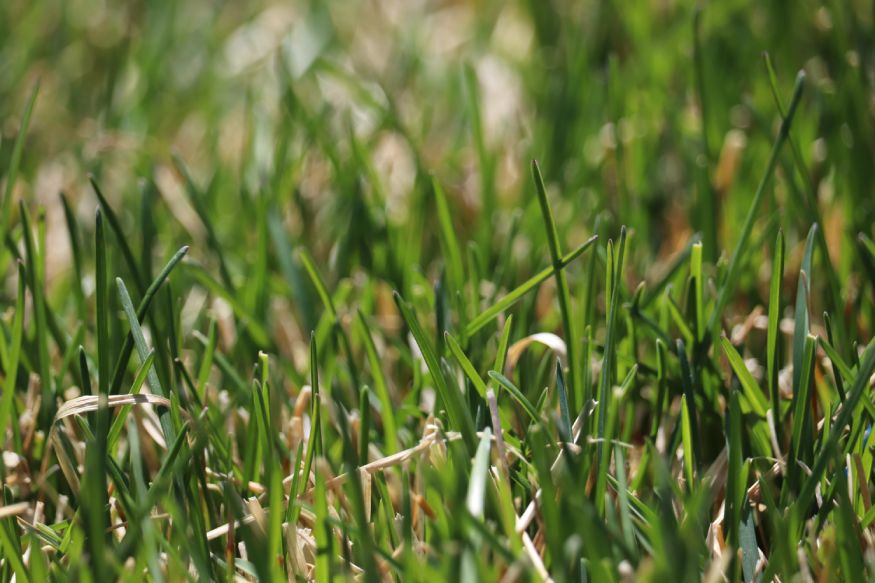
| Also Known As | Poa pratensis L. |
| Type of Grass | Cool season perennial |
| Optimal Zones | Northern cool season zone, transition zones |
| Root Structure | Shallow |
| Winter hardiness | Excellent |
| Shade tolerance | Poor to Good |
| Water Requirements | High |
| Drought Tolerance | Poor |
| Self Repair Capacity | Excellent |
| Overall Maintenance Requirements | High |
Why Kentucky Bluegrass is a popular Seed choice In North Dakota
The properties and characteristics of Kentucky Bluegrass make it an excellent choice for those seeking a resilient and adaptable turf grass in North Dakota. This grass is known for its durability, thickness, and ability to withstand extreme weather conditions, including cold winters and dry summers.
Additionally, Kentucky Bluegrass is adapted to a wide range of habitats, making it a versatile option for different soil types and moisture levels.
Maintenance is a crucial factor to consider when selecting the best grass seed for North Dakota.
Kentucky Bluegrass requires regular fertilization, irrigation, and mowing to maintain its quality and appearance. The recommended nitrogen application rate for this grass is 1 to 4 pounds per 1000 square feet per year, depending on the desired quality and use of the lawn. Moreover, irrigation should be done when the soil is dry to a depth of 4 to 6 inches, and mowing should be done at a height of 2 to 3 inches.
Another advantage of Kentucky Bluegrass is its tolerance to moderate salinity and drought. While it may require more water and fertilizer than other grasses in dry or infertile conditions, it is a hardy turf grass that can recover quickly after disturbance or grazing. However, it is essential to note that Kentucky Bluegrass may be susceptible to some diseases and insects, and it may become invasive in some rangelands and native grasslands, reducing plant diversity and wildlife habitat.
Therefore, it is crucial to consider the specific conditions of your lawn and the potential impact of this grass on the local ecosystem before selecting it as the best grass seed for North Dakota.
Looking for the best grass seed for your region?
Our smart lawn plans are designed to work perfectly with your local soil and climate conditions, without any of the toxic stuff.
Use the code EHG20 for an instant $20 discount!
- Personalized lawn care: Custom lawn plans based on soil analysis, climate data, and your specific lawn needs.
- Convenience with a conscience: Products that are not only easy to use but also safe for you, your pets, and the planet.
- Science-backed formulas: Bio-based formulas contain effective, natural ingredients like seaweed, molasses, and iron.
- Expert support: Get one-on-one guidance from a real person and rest easy with Sunday's satisfaction guarantee.
Fine Fescues
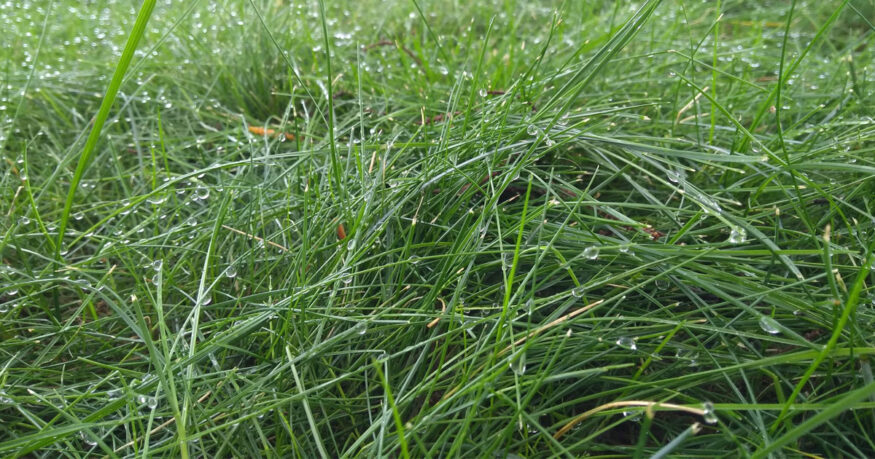
| Also Known As | Hard fescue, strong creeping red fescue, slender creeping red fescue, sheep fescue, chewings fescue; Festuca L. |
| Type of Grass | Cool season perennial |
| Optimal Zones | Northern zones |
| Root Structure | Medium |
| Winter hardiness | Excellent |
| Shade tolerance | Excellent |
| Water Requirements | Medium to High |
| Drought Tolerance | Excellent |
| Self Repair Capacity | Limited |
| Overall Maintenance Requirements | Low |
What Makes Fine Fescue A Great Choice
Fine Fescue is a promising cool-season grass option for lawns in regions with low winter temperatures and a need for drought and shade tolerance, making it a great choice for North Dakota. Its fine texture and dark green color give lawns a beautiful appearance, while its low maintenance requirements make it an ideal choice for homeowners. Fine Fescue requires less water, fertilizer, and mowing than other grasses, and can form a dense turf that can resist weeds and diseases.
When seeding Fine Fescue in North Dakota, it is important to sow the seeds in late summer or early fall when the soil is warm and the weeds are less active. A seed mix that contains at least 50% Fine Fescue will produce optimal results. To establish the lawn, water the seeds lightly and frequently until they germinate and then reduce the frequency and increase the depth of watering. Fertilize the lawn once or twice a year, preferably in spring and fall, with a balanced fertilizer.
Mow the lawn at a height of 2 to 3 inches, leaving the clippings on the lawn to provide organic matter and nutrients. Aerate the lawn every few years to improve soil drainage and reduce compaction.
While Fine Fescue has several benefits, it is important to note that it has poor traffic and heat tolerance and may go dormant in the summer. Additionally, it is prone to thatch buildup, which can be addressed by regular aeration. With proper lawn care, Fine Fescue can be a great grass seed option for North Dakota homeowners looking for a low-maintenance, drought and shade tolerant lawn.
Perennial Ryegrass
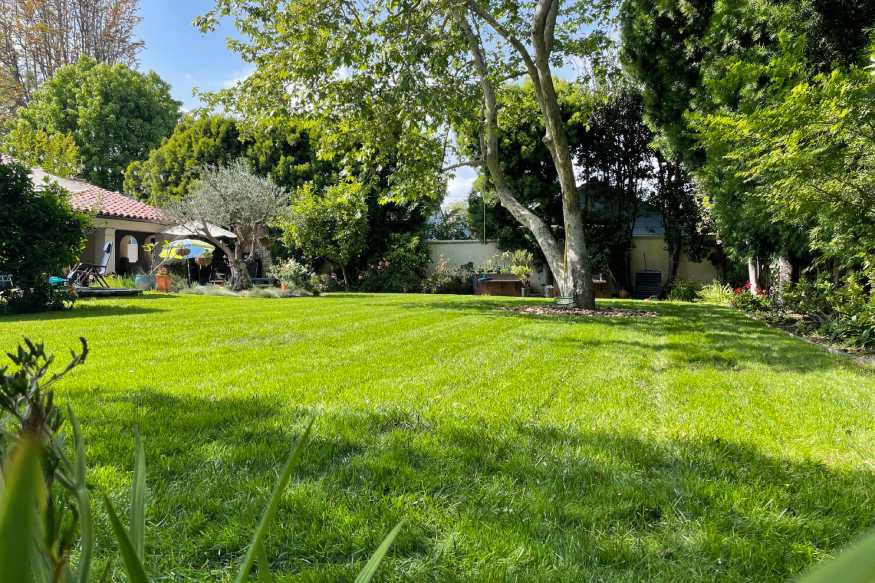
| Also Known As | Lolium perenne L. |
| Type of Grass | Cool season perennial |
| Optimal Zones | Mild northern zones |
| Root Structure | Deep |
| Winter hardiness | Good to excellent |
| Shade tolerance | Moderate |
| Water Requirements | High |
| Drought Tolerance | Good |
| Self Repair Capacity | Excellent wear tolerance |
| Overall Maintenance Requirements | Moderate to high |
Why Perennial Ryegrass Grows well
Perennial Ryegrass offers a versatile option for those seeking a durable, lush lawn that can thrive in various conditions. This type of grass seed is a popular choice for planting grass in North Dakota due to its ability to tolerate dry soil conditions and grow well in both full sun and partial shade. Additionally, Perennial Ryegrass germinates and establishes quickly, making it a great addition to seed mixes with other grass species to create a stable and attractive lawn.
When it comes to maintenance, Perennial Ryegrass requires regular mowing to keep it at a height of 2 to 3 inches. Fertilization in spring and fall, as well as irrigation during dry periods, can also help keep it healthy and green. While Perennial Ryegrass is marginally hardy and may not survive extremely cold winters, it can be mixed with other hardier grasses such as Kentucky Bluegrass or Fine-leaf Fescues to ensure a resilient and long-lasting lawn.
Overall, Perennial Ryegrass is one of the best grass seeds for North Dakota due to its suitability for shady sites, hilly areas, and high traffic lawns. Its quick establishment and good forage quality also make it a popular choice for grazing or hay production. However, those in areas with extremely cold winters may want to consider mixing it with other hardier grasses or opting for a different type of grass seed altogether.
Buffalograss
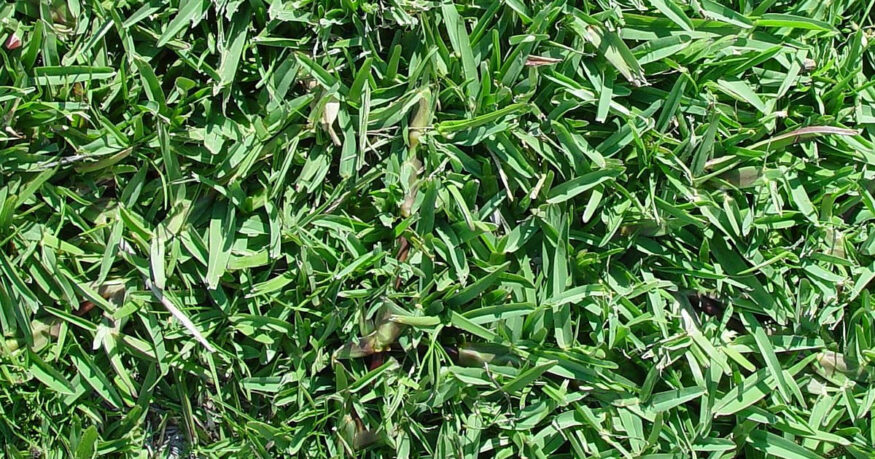
| Also Known As | Buffalograss; Buchloe dactyloides |
| Type of Grass | Warm season perennial |
| Optimal Zones | Northern, transition, and southern zones |
| Root Structure | Very deep |
| Winter hardiness | Great |
| Heat tolerance | Great |
| Shade tolerance | Poor |
| Water Requirements | Low |
| Drought Tolerance | Excellent |
| Self Repair Capacity | Moderate to high |
| Overall Maintenance Requirements | Low after establishment |
Why Buffalograss Is a Popular Grass seed Choice
Buffalograss is a native grass species that is well-suited for the dry climate and harsh winters of North Dakota. This makes it an excellent option for homeowners looking for the best grass seed mix for their lawn.
Buffalograss is low-maintenance and requires infrequent watering, mowing, and fertilizing, making it a great choice for those who want to reduce their lawn care efforts. Additionally, buffalograss has long roots that can help prevent soil erosion on hillsides.
One of the significant advantages of buffalograss is its ability to attract wildlife with its natural look when left unmowed. This can be particularly appealing to homeowners who want to create a natural habitat for birds and butterflies in their backyard. However, it is essential to note that buffalograss has poor shade tolerance and may not grow well in areas with low sunlight. It is also slow to establish and may take one to three years to form a dense sod. During this time, homeowners should be vigilant in controlling weeds that may invade the area.
To successfully plant buffalograss in North Dakota, it is crucial to follow some basic care instructions. Homeowners should plant buffalograss seeds in late spring or early summer when soil temperatures are above 60°F, using certified seeds of recommended varieties such as Bison, Cody, Bowie, or Sundancer.
They should prepare the soil by removing existing vegetation, tilling, leveling, and raking. Additionally, it is essential to keep the soil moist but not soggy until seeds germinate, reduce watering frequency as seedlings grow and become established, and fertilize once a year in late spring or early summer with a low-nitrogen fertilizer.
With these steps, homeowners can successfully grow buffalograss on their North Dakota property.
North Dakota’s Climate And Growing Challenges For Lawns
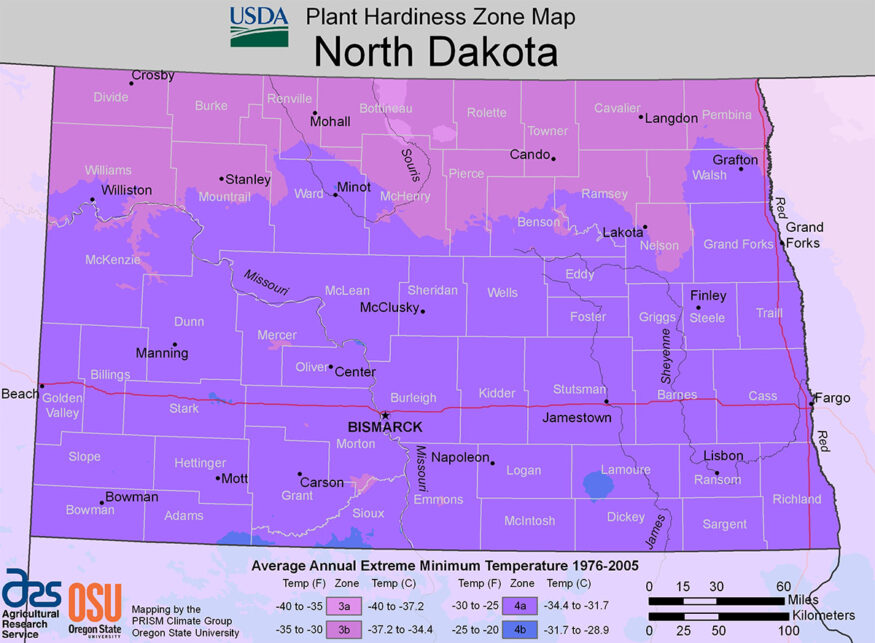
The climate and topography of North Dakota present unique challenges for growing and maintaining a healthy lawn. The short growing season of about 120 days limits the choice of grass species that can survive the winter and thrive in the summer.
The most suitable grasses for North Dakota lawns are Kentucky bluegrass, fine-leaf fescues, and perennial ryegrass. These grasses are cold-tolerant, drought-resistant, and shade-tolerant, and can provide a dense, green, and uniform lawn with proper maintenance.
Related Article: The Best Grass Seed For South Dakota
Soil Types
The soil types in North Dakota vary from sandy loams to heavy clays, with different levels of organic matter, pH, salinity, and drainage.
Proper soil preparation and amendment can improve the soil structure, fertility, and water-holding capacity, and enhance the root system growth and nutrient uptake of the turfgrass.
Soil testing can also help determine the nutrient deficiencies and pH imbalances, and guide the application of fertilizers and lime.
Weed and Disease Control
Moreover, proper weed control practices such as pre-emergent herbicides, hand-pulling, and overseeding can help reduce the competition from invasive weeds and promote the establishment of desirable turfgrass.
In addition to common weed problems, North Dakota lawns may encounter various disease and insect problems such as leaf spot, lawn rust, powdery mildew, billbugs, and white grubs. These pests can cause significant damage to the turfgrass health and appearance if not properly identified and managed. Integrated pest management (IPM) practices such as cultural controls, biological controls, and chemical controls can help prevent or reduce pest problems and minimize the environmental impact.
Proper lawn maintenance practices such as mowing, aeration, dethatching, and overseeding can also help improve the turfgrass vigor and resilience and reduce the stress from pests and environmental factors.
Looking for the best grass seed for your region?
Our smart lawn plans are designed to work perfectly with your local soil and climate conditions, without any of the toxic stuff.
Use the code EHG20 for an instant $20 discount!
- Personalized lawn care: Custom lawn plans based on soil analysis, climate data, and your specific lawn needs.
- Convenience with a conscience: Products that are not only easy to use but also safe for you, your pets, and the planet.
- Science-backed formulas: Bio-based formulas contain effective, natural ingredients like seaweed, molasses, and iron.
- Expert support: Get one-on-one guidance from a real person and rest easy with Sunday's satisfaction guarantee.
